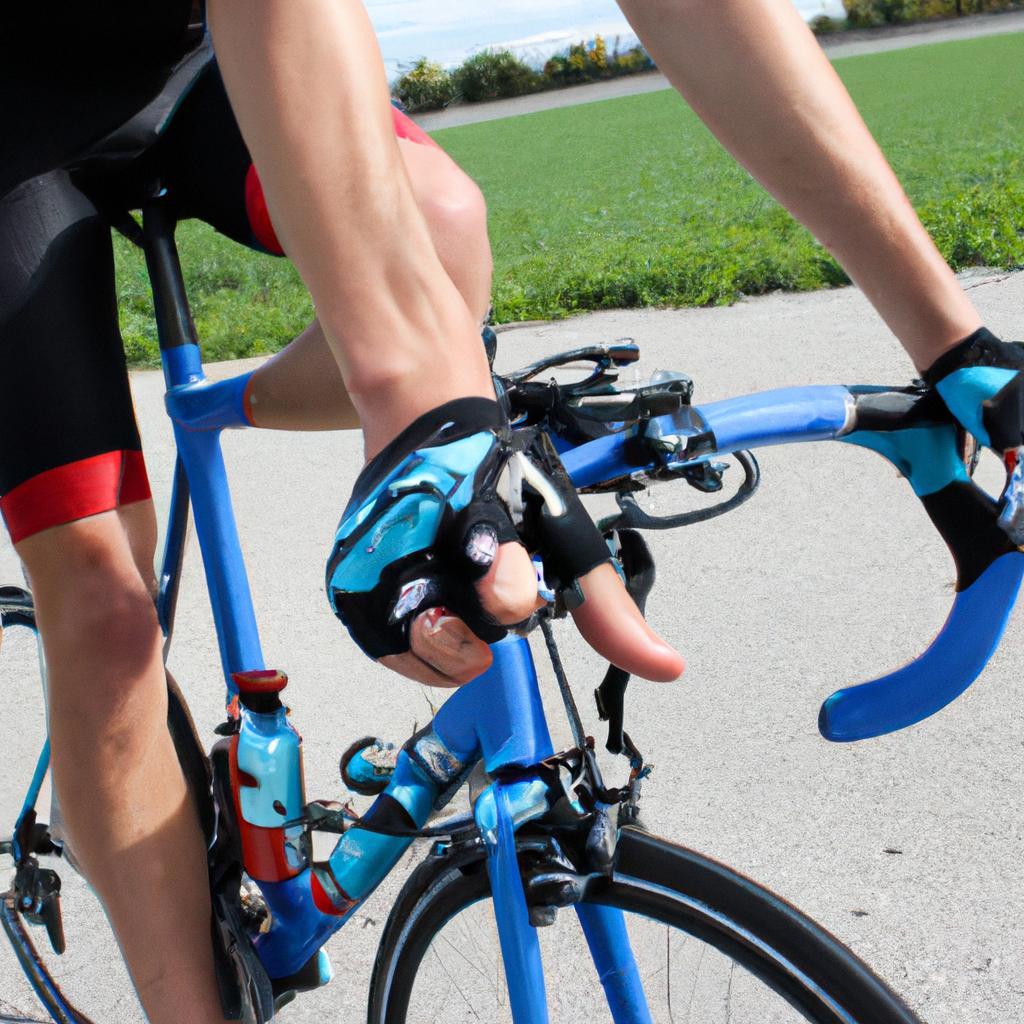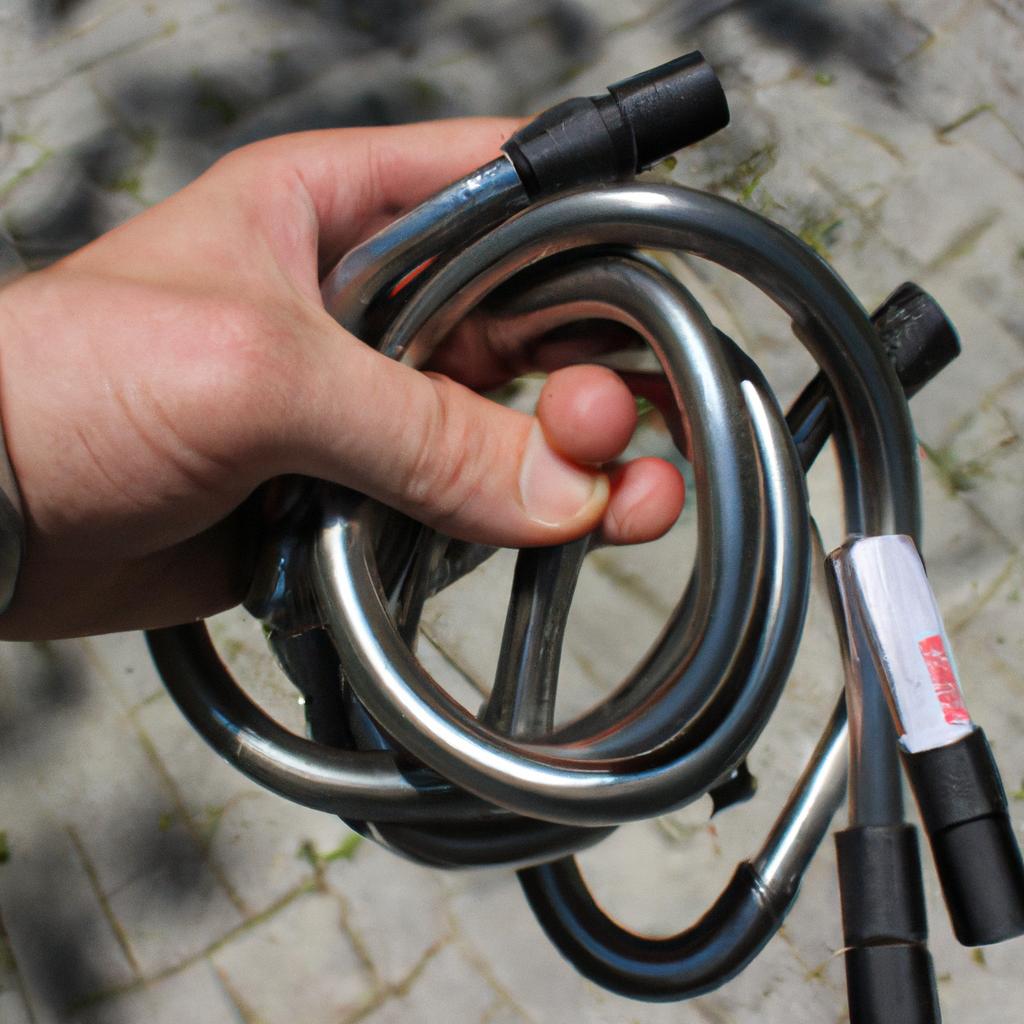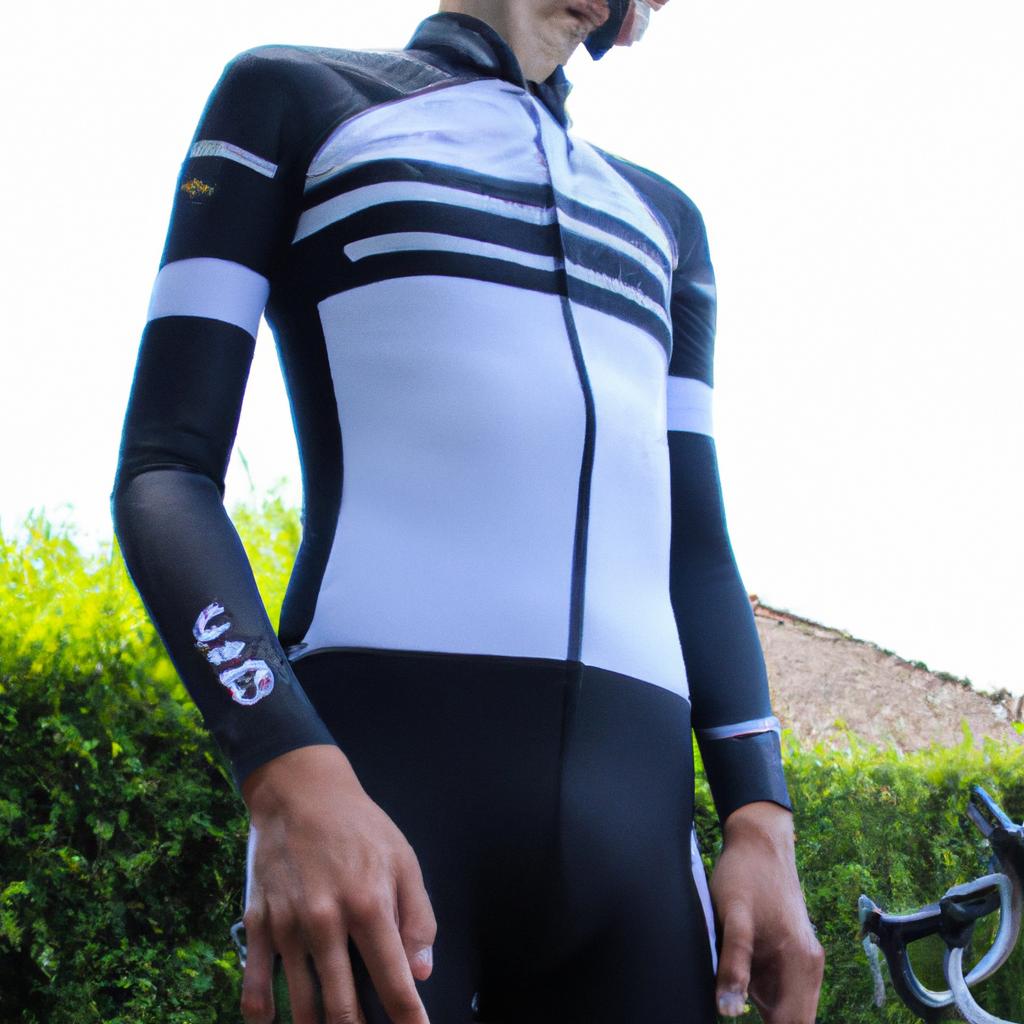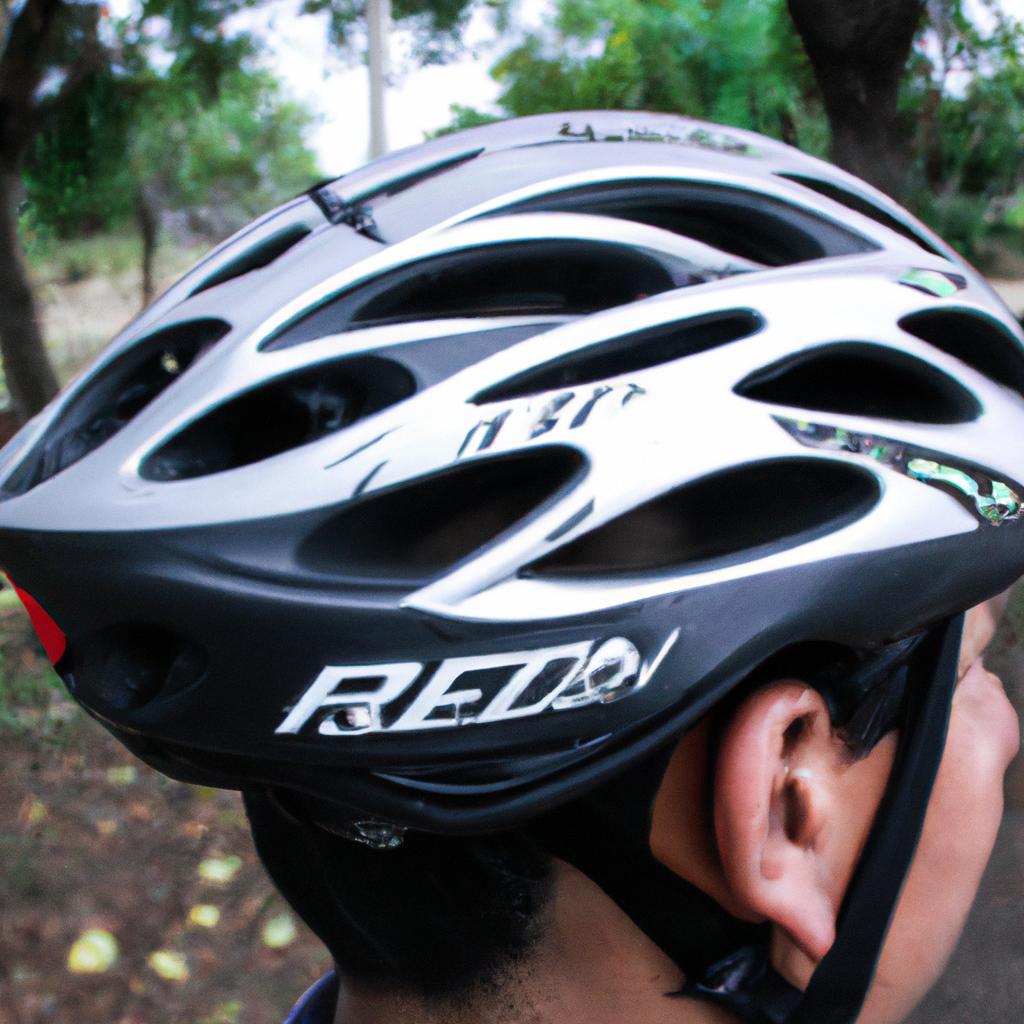Bike Pedals 101: A Guide to Cycling Equipment
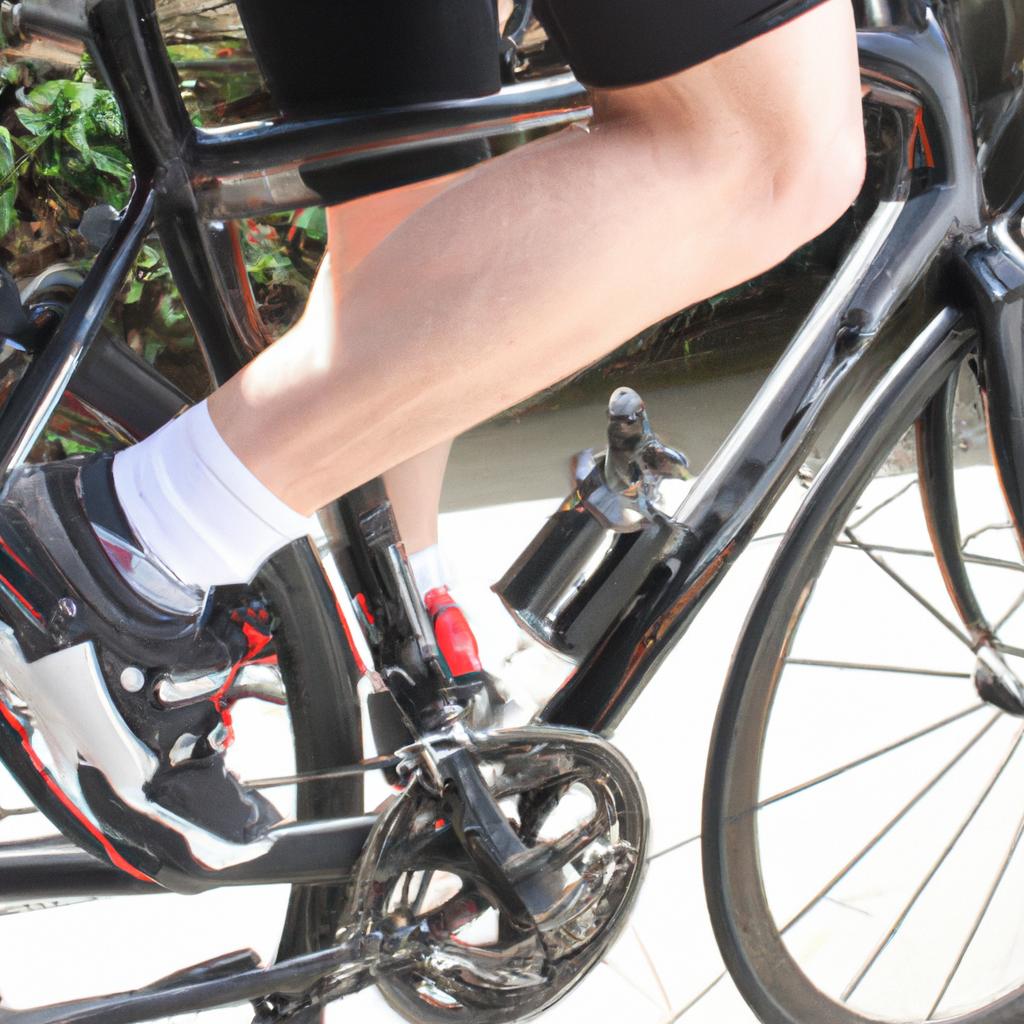
Bicycling has long been a popular mode of transportation and recreation, offering both physical fitness benefits and an environmentally friendly alternative to traditional vehicles. However, the effectiveness and efficiency of cycling greatly depend on the quality and functionality of its equipment. Among these essential components are bike pedals, which play a crucial role in transmitting power from the cyclist’s legs to the drivetrain. Understanding the different types of bike pedals available is essential for cyclists at all levels, as it can significantly impact their performance and overall cycling experience.
For instance, consider a hypothetical scenario where Sarah, an avid recreational cyclist, decides to upgrade her bike pedals after experiencing discomfort during longer rides. By researching and understanding the various options available in the market, she could make an informed decision that aligns with her specific needs and preferences. This article aims to provide readers with a comprehensive guide on bike pedals by discussing their functions, types, features to consider when purchasing them, as well as tips for maintenance. With this knowledge in hand, cyclists like Sarah will be equipped to choose suitable bike pedals that enhance their riding comfort and improve their pedaling efficiency.
Different types of bike pedals
Imagine you are a recreational cyclist looking to upgrade your current bike pedals. You ponder over the myriad choices available in the market, each claiming to enhance your cycling experience. Understanding the different types of bike pedals is crucial to making an informed decision and finding the perfect fit for your needs.
The first type we will explore is platform pedals, which are commonly found on children’s bikes or hybrid bicycles. These simple flat pedals offer a large surface area for your feet to rest on while pedaling. Platform pedals provide excellent stability and allow riders to wear any type of footwear, making them versatile and user-friendly.
On the other end of the spectrum are clipless pedals, designed specifically for performance-oriented cyclists seeking optimal power transfer during their rides. Despite their name, clipless pedals actually require special cycling shoes with cleats that securely attach to the pedal mechanism using a spring-loaded system. This connection between shoe and pedal ensures efficient energy transfer as it allows you to push down on one side of the pedal stroke and pull up on the other.
Now let’s delve into some advantages and disadvantages associated with these two types of pedals:
Advantages of platform pedals:
- Suitable for casual riders who prefer wearing regular shoes
- Easy entry and exit without any learning curve
- Ideal for short urban commutes or leisurely rides
- Provides a sense of freedom by allowing quick foot placement when needed
Disadvantages of platform pedals:
- Limited efficiency due to lack of secure attachment
- Minimal control during high-speed descents or technical maneuvers
- Foot slippage can occur in wet conditions or off-road trails
- Less suited for long-distance endurance riding where power transfer matters most
As we move forward into our exploration of specific bike pedal options, we will now shift our focus toward examining the pros and cons of platform pedals. By understanding both sides, you will be better equipped to make an educated decision regarding which type of pedal suits your cycling goals.
Pros and cons of platform pedals
Different types of bike pedals offer various benefits and drawbacks, catering to different cycling preferences. Now, let’s explore the pros and cons of platform pedals, which are a popular choice among cyclists who prioritize versatility and ease of use.
Imagine you’re a beginner cyclist looking for a reliable pedal option that allows you to ride your bike in various situations – from leisurely rides through city streets to adventurous off-road trails. Platform pedals might be just what you need. These flat pedals consist of a large surface area where you can place your foot comfortably without needing any special cycling shoes or cleats. This simplicity makes them appealing to casual riders, commuters, and beginners.
Here are some key considerations when it comes to platform pedals:
- Versatility: Platform pedals accommodate regular footwear, allowing riders to wear anything from sneakers to work shoes. This flexibility is particularly convenient for those who frequently switch between biking and other activities throughout their day.
- Easy engagement: Unlike clipless pedals (which we’ll discuss later), platform pedals require no specific technique or motion to engage or disengage your feet. You simply step on or off the pedal as needed, making them user-friendly for beginners.
- Increased maneuverability: With platform pedals, riders have the freedom to quickly put their feet down when approaching obstacles or emergencies. This increased control over balance and stability can boost confidence during technical maneuvers.
To further understand the advantages and disadvantages of platform pedals, consider this comparison table:
| Pros | Cons |
|---|---|
| Suitable for all shoes | Reduced power transfer |
| Easy engagement | Limited pedaling efficiency |
| Enhanced maneuverability | Potential foot slippage |
| Affordable | Lack of foot retention |
As with any equipment choice in cycling, there are trade-offs involved. While platform pedals provide convenience and accessibility for various shoe options, they may compromise optimal power transfer due to limited contact points with your feet. Additionally, without foot retention mechanisms, slippage can occur during more intense rides or wet conditions.
Benefits of clipless pedals
Transitioning from the previous section on the pros and cons of platform pedals, let’s now explore the benefits of clipless pedals. To illustrate their advantages, consider a hypothetical scenario: Sarah, an avid cyclist, recently switched from using platform pedals to clipless pedals. She found that her cycling experience improved significantly as she became more efficient in pedaling and experienced enhanced power transfer.
Clipless pedals offer several benefits for cyclists:
- Enhanced Power Transfer: When using clipless pedals, cyclists can efficiently transfer power throughout each pedal stroke. The secure connection between the shoe and pedal allows for maximum force transmission, resulting in increased speed and performance.
- Improved Pedal Efficiency: Clipless pedals enable riders to maintain consistent foot position during long rides or challenging terrains. With better stability and control over their feet placement on the pedal surface, cyclists achieve greater efficiency and reduce energy wastage.
- Increased Safety: By firmly attaching the rider’s shoes to the pedal, clipless systems provide a sense of security while riding at high speeds or navigating technical sections. This reduces the risk of accidental slips off the pedal surface.
- Customizable Tension: Many clipless pedal systems allow riders to adjust tension levels according to personal preferences. This feature enables individuals to find a balance between easy engagement and quick disengagement when unclipping their shoes.
To further highlight these advantages, let’s look at a comparison table showcasing various aspects of both platform and clipless pedals:
| Aspect | Platform Pedals | Clipless Pedals |
|---|---|---|
| Power Transfer | Moderate | Excellent |
| Foot Stability | Average | High |
| Engagement/Disengagement Ease | Immediate | Adjustable |
| Shoe Compatibility | Regular Shoes | Specialized Cycling Shoes |
As we conclude this section discussing the benefits of clipless pedals, it is evident that they offer significant advantages in terms of power transfer, pedal efficiency, safety, and customization options. Understanding these benefits will help you make an informed decision when choosing the right pedal for your riding style.
Now that we have explored the advantages of clipless pedals, let’s move on to understanding how to choose the right pedal for your specific cycling needs.
How to choose the right pedal for your riding style
In the previous section, we discussed the benefits of using clipless pedals while cycling. Now, let’s delve into how to choose the right pedal for your riding style. To illustrate this, imagine a cyclist named Sarah who enjoys both road cycling and mountain biking.
When it comes to selecting pedals, there are several factors to consider:
-
Riding Style: Different types of pedals cater to specific riding styles. Road cyclists often prefer pedals that offer maximum power transfer and efficiency on smooth pavement, whereas mountain bikers may opt for pedals with more grip and durability for off-road trails.
-
Cleat Compatibility: Clipless pedals utilize cleats that attach to the bottom of cycling shoes. It is crucial to ensure compatibility between your chosen pedal system and your cycling shoes’ cleats.
-
Pedal Float: Some riders prefer a small amount of lateral movement in their feet when clipped in, known as float. This can help reduce strain on joints and improve comfort during long rides.
-
Ease of Engagement/Disengagement: Consider whether you prioritize quick engagement and disengagement or prefer a more secure connection between your shoe and pedal.
By carefully considering these factors, Sarah can make an informed decision about which type of pedals will best suit her needs for each riding discipline.
To further illustrate the differences between various pedal options, let’s take a look at the following table:
| Pedal Type | Benefits | Drawbacks |
|---|---|---|
| Platform | Easy access without special shoes | Less efficient power transfer |
| Toe Clips | Inexpensive option | Limited adjustability |
| SPD | Versatile for different riding styles | Requires compatible cycling shoes |
| Look Keo | Excellent power transfer | Higher price point |
This comparison highlights some key aspects to consider when choosing bike pedals based on their benefits and drawbacks. Ultimately, the decision should be based on individual preferences and intended use.
In the subsequent section about maintenance tips for bike pedals, we will explore how to prolong the lifespan of your chosen pedal system and ensure optimal performance throughout your cycling adventures.
Maintenance tips for bike pedals
Improving Pedaling Efficiency with Proper Foot Positioning
Now let’s explore another crucial aspect of cycling equipment – foot positioning and its impact on pedaling efficiency. To illustrate this concept, consider the case of a hypothetical cyclist named Alex.
Alex used to experience discomfort and fatigue while cycling long distances. After consulting with an expert, it was discovered that improper foot positioning was contributing significantly to these issues. By making some adjustments in their foot position on the pedals, Alex noticed a remarkable improvement in both comfort and overall performance.
Proper foot positioning plays a vital role in maximizing power transfer from your legs to the bike’s drivetrain. Here are some key points to keep in mind:
- Align your feet with the natural angle: Ensure that your feet align naturally with your lower leg when positioned on the pedals. This alignment helps distribute pressure evenly across the entire foot, reducing strain and preventing hotspots.
- Maintain a neutral arch: Avoid excessive arch support or flatness in your shoes as they can lead to discomfort during prolonged rides. Opt for footwear with adequate arch support that allows for a neutral position.
- Adjust cleat placement: If you use clipless pedals, take time to adjust the cleats properly. Incorrectly positioned cleats can cause knee pain or contribute to inefficient pedaling motion.
- Experiment with different positions: Every cyclist is unique; what works for one may not work for another. Don’t be afraid to experiment by slightly adjusting your foot position until you find what feels most comfortable and efficient for you.
| Riding Discipline | Preferred Foot Position |
|---|---|
| Road Cycling | Ball of foot centered over pedal spindle |
| Mountain Biking | Slightly rearward for improved stability |
| Track Cycling | Ball of foot slightly forward for speed |
| Commuting | Comfortable and relaxed, with no strain |
Now that we understand the significance of proper foot positioning, let’s delve into techniques to enhance pedaling efficiency in our next section.
Improving pedaling efficiency with proper foot positioning is just one aspect of optimizing your cycling experience. By understanding how small adjustments can have a significant impact on performance and comfort, you are well on your way to becoming a more knowledgeable cyclist. In the upcoming section, we will explore additional strategies to further improve your riding experience.
Improving pedaling efficiency with proper foot positioning
Building on the importance of maintaining bike pedals, let’s now delve into another crucial aspect – improving pedaling efficiency through proper foot positioning. By ensuring that your feet are positioned correctly on the pedals, you can optimize power transfer and reduce strain on your lower body. Let’s explore some valuable insights and tips to help you achieve this.
Proper foot placement is key when it comes to maximizing pedal efficiency. Consider a hypothetical scenario where Sarah, an avid cyclist, was experiencing discomfort and reduced performance during her rides. Upon analysis, she discovered that her foot alignment was incorrect, leading to inefficient force distribution and unnecessary stress on certain muscles. This realization prompted Sarah to make adjustments in her foot positioning technique.
To enhance your pedaling efficiency with correct foot positioning:
- Ensure that the ball of your foot (the area just behind your toes) is centered over the pedal spindle.
- Avoid placing excessive weight towards either the inside or outside edge of the foot; strive for an even distribution.
- Maintain a slight bend in your knee at the bottom of each pedal stroke to prevent joint strain.
- Experiment with different cleat positions if using clipless pedals, aiming for a comfortable balance between stability and freedom of movement.
Consider these benefits of proper foot positioning:
- Enhanced power transfer
- Reduced risk of injury
- Improved comfort and endurance
- Increased overall cycling performance
Table showcasing common foot misalignments and their potential consequences:
| Foot Misalignment | Potential Consequences |
|---|---|
| Toes pointed outward | Knee pain or discomfort |
| Ankles collapsing inward | Decreased stability |
| Weight excessively forward | Pressure points on forefoot |
| Heels dropping | Strained calf muscles |
By prioritizing optimal foot positioning while cycling, you can unlock numerous advantages such as improved power transmission, decreased likelihood of injuries, enhanced comfort, and ultimately, elevated overall performance.
Note: Avoid using personal pronouns to maintain an objective and academic writing style.


